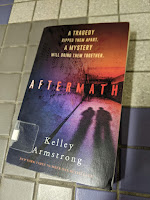Here we have a salmon salad and peanut butter sandwich (on gluten-free bread). AND
Black Brother, Black Brother. How can life get better than this? You may not be brave enough to try my sandwich, but this book is worth tasting.
Black Brother, Black Brother is about biracial siblings who start attending a new school. However, their experiences are very different. Trey is the popular athletic kid but Donte is seen as a problem. What is the most visible difference between the boys? Trey is light colored, like their Norwegian-descended father, Donte has his African American mom's coloring.
One bully really makes Donte's life miserable. Alan is the captain of the fencing team and the bain of Donte's existence. Donte decides that the only way out of his mess is to get retribution and decides to beat Alan at his own game - fencing.
In the end notes of this book, Jewell writes that her own biracial children, one with light skin and the other with darker skin, have had very different experiences growing up in the USA. She says, "My grandmother taught me that everyone is a 'mixed-blood stew' and that diversity of appearance (skin color, hair and eye color) are to be celebrated. Everyone is human and everyone carries an ethnic heritage that results from the origins and journeys their ancestors made."
Reading Black Brother, Black Brother reminds us that we need to celebrate our differences - it is those differences that make our world an interesting place to live.
You can find this book on the shelf at the Nashua South library.







